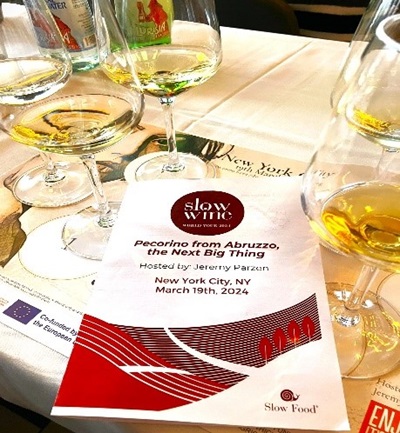Italian consumers, numbering 29 million, are increasingly drawn to sustainability, favoring organic wines and eco-friendly packaging. Automation, particularly through robotics, is revolutionizing distribution processes, while online platforms are becoming pivotal in driving sales. Italy’s wine market benefits from its rich history, diverse terroir, and the cultural significance of wine in Italian cuisine.
A notable trend in the market is the rising demand for premium and luxury wines. Italian consumers are willing to pay a premium for high-quality wines offering unique flavors and experiences. This trend is fueled by a growing appreciation for fine wines and a desire to indulge in luxury products.
Consumer Preferences
Italian consumers have a deep-rooted tradition of enjoying wine with their meals, contributing significantly to the country’s wine market growth. Wine is an integral part of the Italian dining experience, with consumers often selecting specific wines to complement their meals. Additionally, there is a growing interest among Italian consumers in exploring different varieties and regions of wine, leading to increased demand for a diverse range of options in the market.
Regional Dynamics and Export Markets
Piedmont leads in wine exports, making a substantial contribution to Italy’s total sales. Other regions such as Veneto, Puglia, and Sicily also show promising growth. However, declines in wine purchases from key markets like the United States and China emphasize the need for strategic adaptation.
Technological Innovation and Sustainability
The integration of platforms like e-commerce, blockchain, and AI can enhance traceability, transparency, and efficiency in the wine supply chain. Prioritizing sustainable packaging and production methods aligns with consumer preferences and global sustainability initiatives.
Challenges and Future Outlook
The Italian wine industry faces challenges such as climate change, generational renewal in grape farming, and increased competition in international markets. Addressing these challenges requires a multifaceted approach, including sustainable production practices, market consolidation, and targeted promotion strategies.
Growth of the Slow Wine Movement
The concept of “slow wine,” akin to the Slow Food movement, emphasizes the preservation of Italian food and wine heritage, support for small-scale producers, and advocacy for sustainability and traditional winemaking practices. This movement is gaining traction globally, indicating a promising future for sustainable and artisanal wine production.
Qualifications for Slow Wine
Criteria for inclusion in the slow wine framework typically include sustainable farming practices, minimal intervention in winemaking, and a commitment to preserving cultural heritage.
Terroir-Driven Wines
Slow wines reflect their unique terroir, showcasing the characteristics of their place of origin. Native yeast fermentation and minimal winemaking intervention contribute to the expression of time and place in the final product.
Economic Factors of Slow Wine
Several factors, including quality, sustainability, rarity, aging potential, reputation, branding, and market demand, influence the economic value of slow wine in Italy.
Slow Wine Guide
The Slow Wine Guide, initiated in 2010, highlights wineries committed to terroir-driven wines made from sustainably farmed grapes, providing transparency on farming practices and tasting notes for consumers seeking wines aligned with the slow wine ethos.
Slow Wine Coalition
Established as a global network of wine industry professionals and enthusiasts, the Slow Wine Coalition collaborates on projects to advance the slow wine movement.
Promoting Responsible Consumption
The slow wine movement advocates for quality wines produced responsibly, encouraging consumers to support wineries prioritizing sustainability and environmental stewardship.
Challenges and Opportunities Ahead
The Italian wine industry faces significant challenges related to supply and market dynamics, necessitating effective strategies to maintain competitiveness in the global market. Collaborative efforts with distribution channels and strategic adaptations in distribution and promotion are essential for navigating these challenges.
Unique and Committed
Despite challenges, Italy’s wine industry remains resilient, with its unique territorial organization and commitment to quality and sustainability positioning it favorably in the global market. Continued innovation and adaptation will be crucial for sustaining growth and competitiveness in the dynamic wine industry landscape.
© Dr. Elinor Garely. This copyright article, including photos, may not be reproduced without written permission from the author.
This is a 3-part series. Stay tuned for part 2.
(eTN): Slow Wine in Italy: A Passing Fad or Essential Evolution? | re-post license | post content























